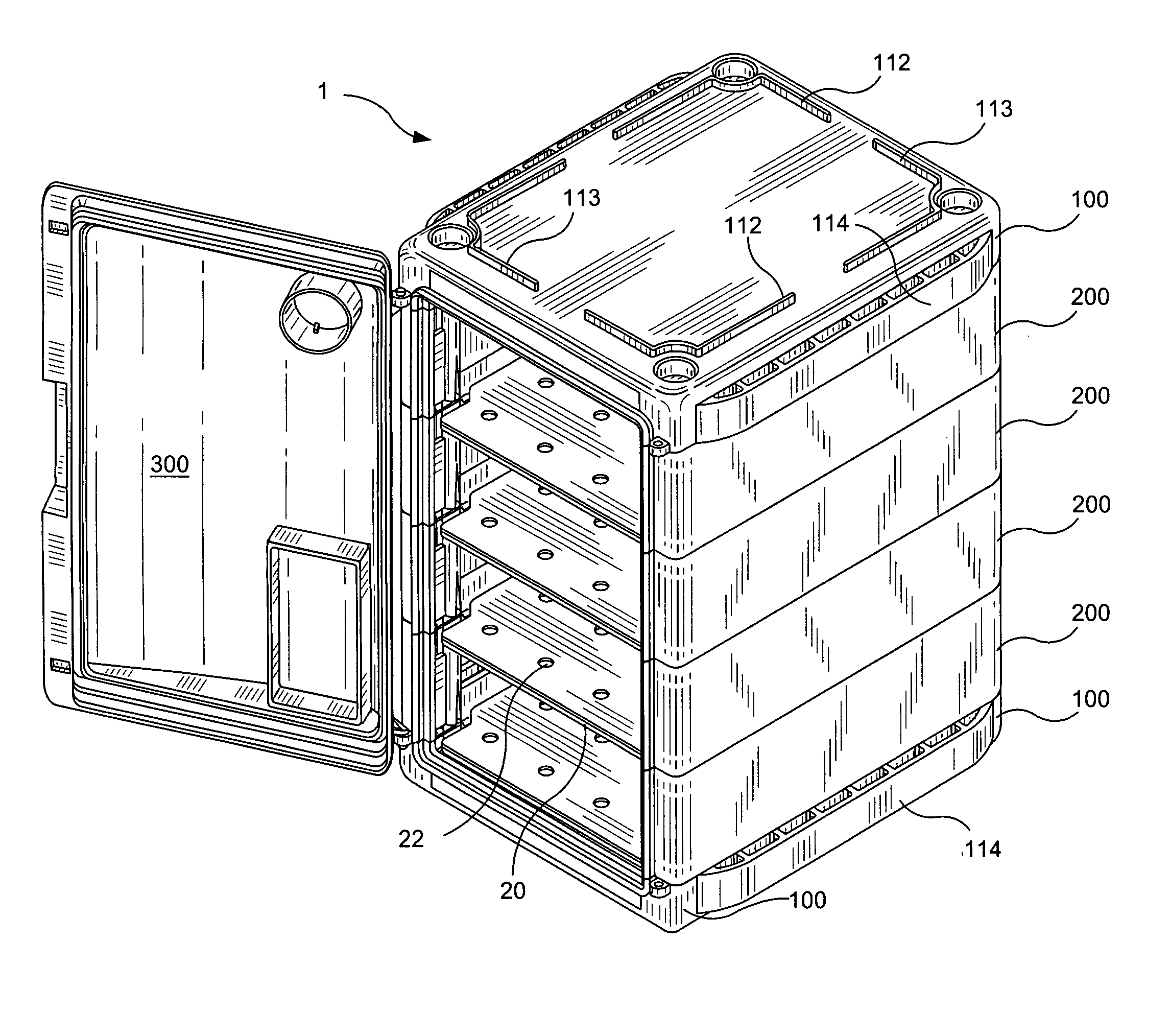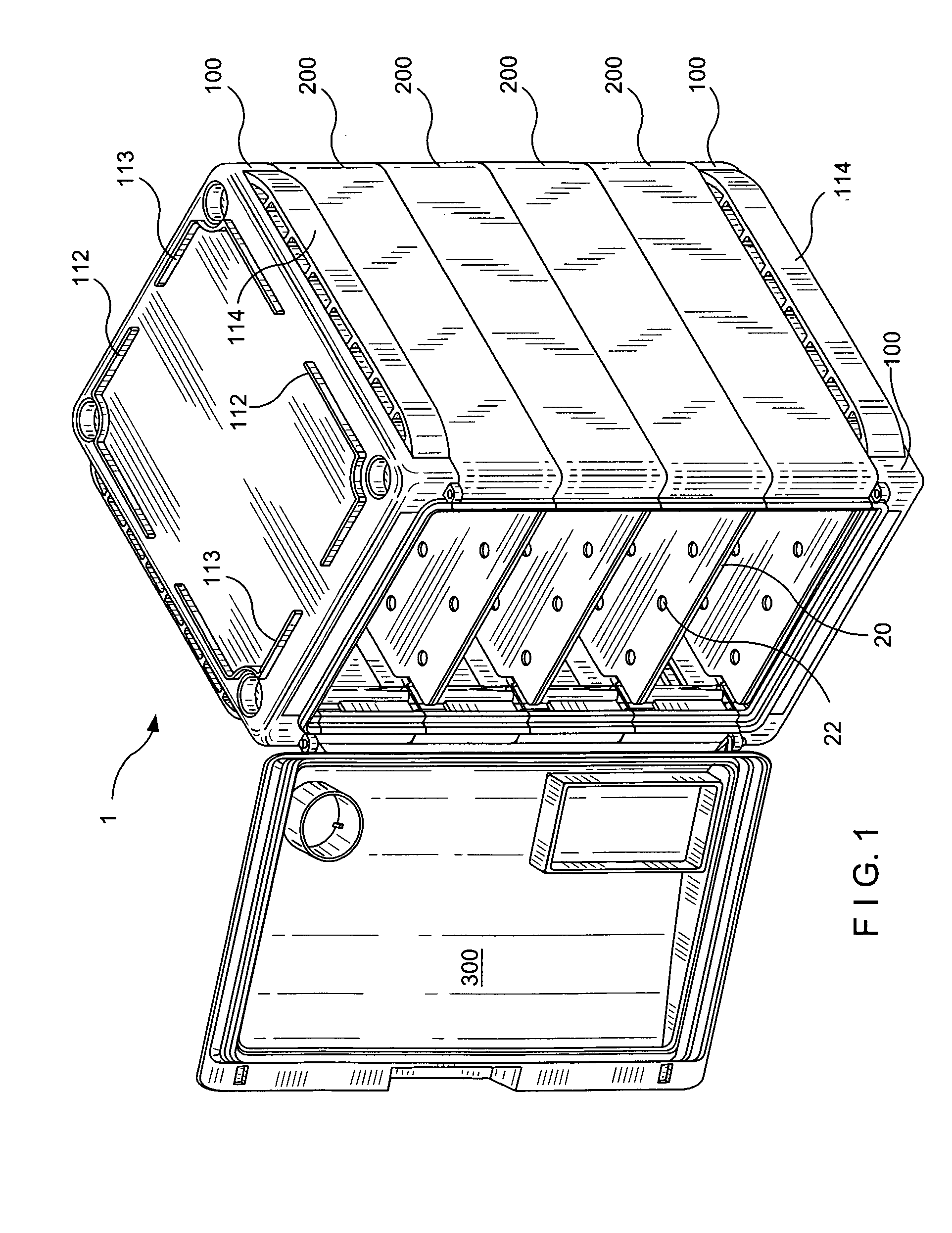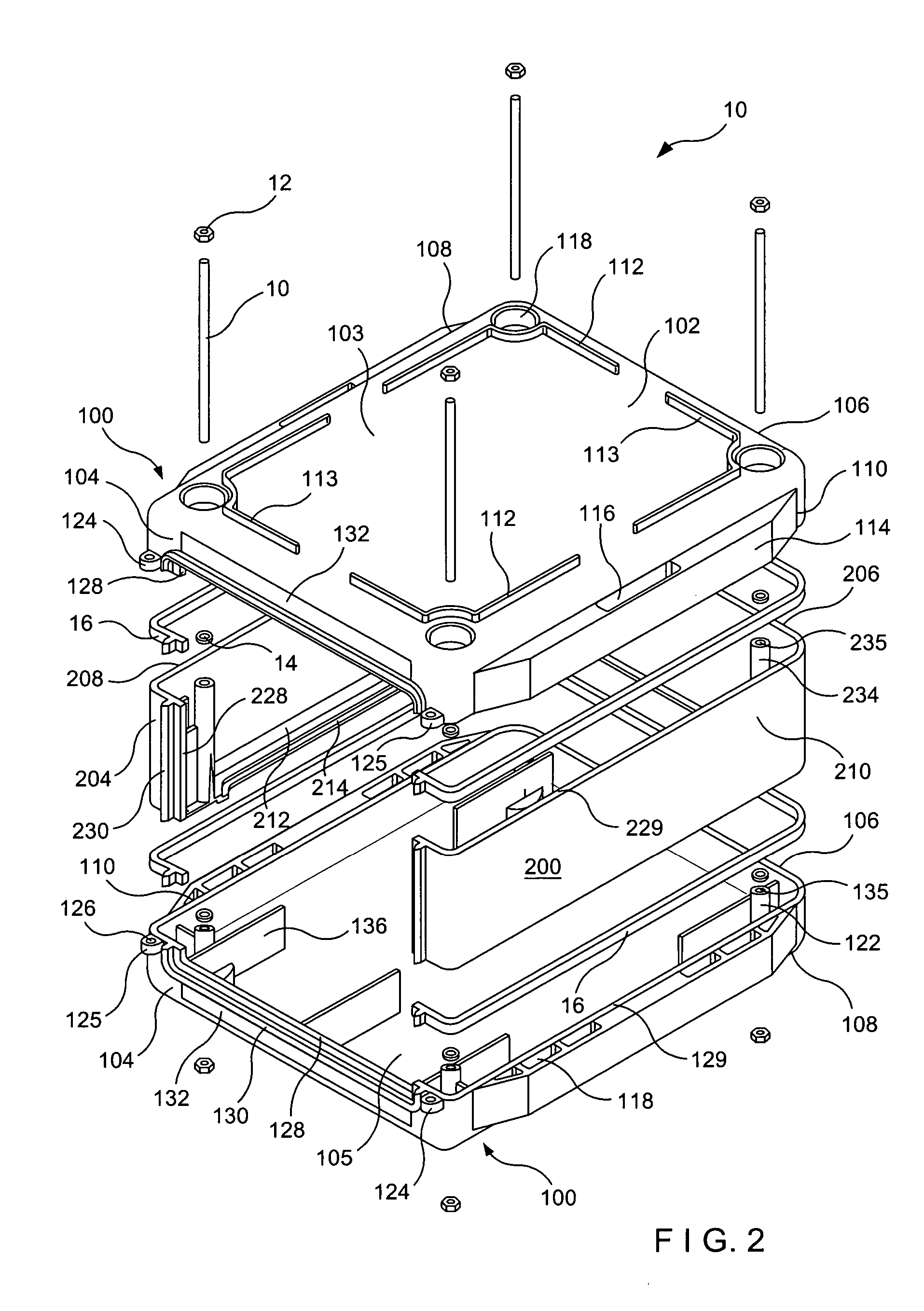Modular laboratory cabinet
a laboratory cabinet and module technology, applied in the field of laboratory equipment, can solve the problems of cumbersome and expensive transportation and storage of fixed size laboratory cabinets, and inconvenient adjustment of holding capacity, so as to facilitate the adjustment of holding capacity. , the effect of simple configuration
- Summary
- Abstract
- Description
- Claims
- Application Information
AI Technical Summary
Benefits of technology
Problems solved by technology
Method used
Image
Examples
Embodiment Construction
[0040] Shown throughout the figures, the present invention is generally directed to an insulated modular cabinet assembly adapted for use in various laboratory environments. The assembly incorporates a simple and flexible stackable modular design lending itself to effortless on-site assembly and customization by an end user.
[0041] Referring initially to FIG. 1, a preferred embodiment of the modular cabinet assembly 1 of the present invention is illustrated in a fully assembled state. The modular cabinet assembly 1 generally includes a housing subassembly comprised of one or more stackable modules 200 interposed between a pair of identical opposing housing end units 100, and a cabinet door 300 hingedly connected to the front of the housing end units 100. As will be described in more detail below, the housing end units 100 and interposed stackable modules 200 are securely fastened to one another using fastening components, sealing gaskets and the like, such that in a completely assem...
PUM
| Property | Measurement | Unit |
|---|---|---|
| area | aaaaa | aaaaa |
| recessed area | aaaaa | aaaaa |
| relative humidity | aaaaa | aaaaa |
Abstract
Description
Claims
Application Information
 Login to View More
Login to View More - R&D
- Intellectual Property
- Life Sciences
- Materials
- Tech Scout
- Unparalleled Data Quality
- Higher Quality Content
- 60% Fewer Hallucinations
Browse by: Latest US Patents, China's latest patents, Technical Efficacy Thesaurus, Application Domain, Technology Topic, Popular Technical Reports.
© 2025 PatSnap. All rights reserved.Legal|Privacy policy|Modern Slavery Act Transparency Statement|Sitemap|About US| Contact US: help@patsnap.com



